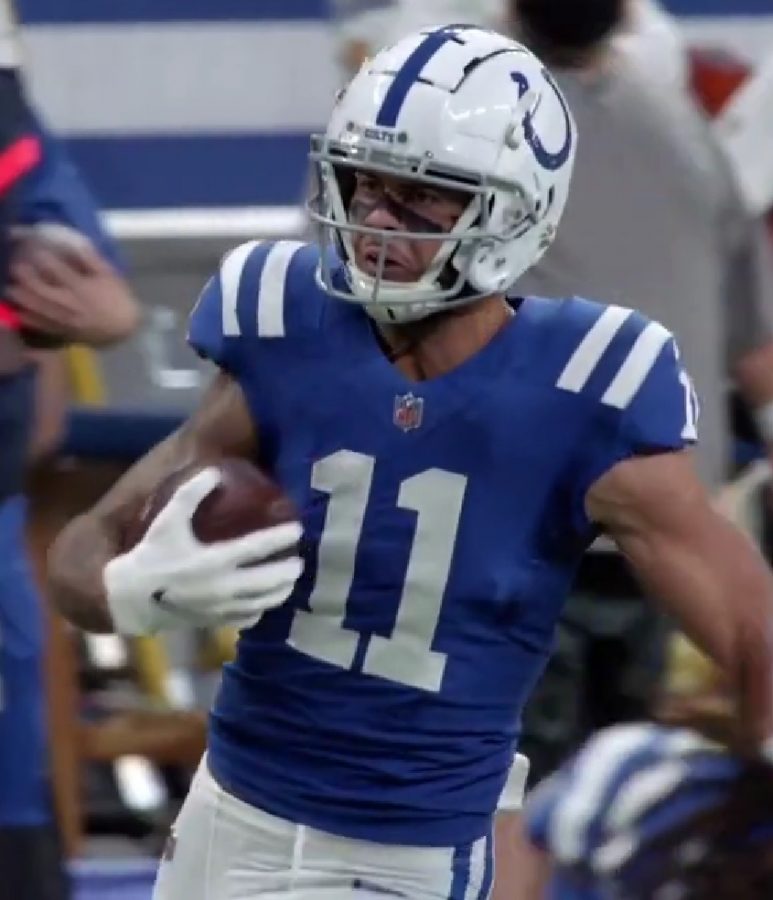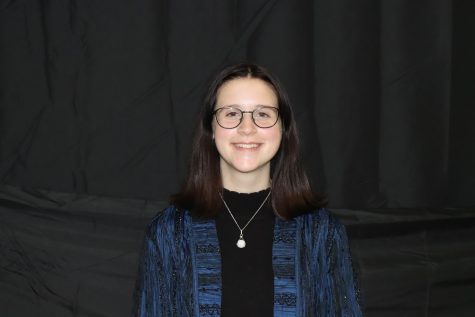In a world full of vibrant sunsets, fields of colorful flowers, deep blue oceans and skies of stars, photographs are taken to capture the essence of beauty within the world as it is experienced or seen. But when the film of a camera fails to develop, what simply remains is a memory.
Individuals with Aphantasia can try to remember every single detail about what they have seen within their visual space, but no matter how hard they try, the mental photograph taken will never develop inside of their minds.
The term Aphantasia was coined in 2015, used to describe the inability to form mental images of objects that are not present.
Some individuals are able to visualize within their mind in full color and movement with detailed imagery, whereas others may see a less detailed or faded image within the mind.
According to American psychologist Bill Faw, the predicted 2-3% of the population with Aphantasia are unable to voluntarily visualize within the mind in any way, linking most moments to words and details.
The frontal, parietal, temporal and occipital lobes in the brain work together to generate imagery, and there is an unknown functional change made somewhere in the linked system to cause Aphantasia.
At times, a majority of the individuals that have Aphantasia are unaware that they have it because most people are born with it, although it can occur or appear over time.
For example, in 2005, when Professor Adam Zeman of the University of Exeter in England came across a man in his mid 60s who lost the ability to visualize after undergoing minor surgery, more public interest developed toward the subject.
Neurologists at the university showed the man a photo of Tony Blair, a British politician, and brain scans showed the visual sectors in his brain lighting up, being able to recognize Blair.
After removing the photo of Blair from the man’s sight, the neurologists asked him to picture Blair within his mind.
The man named Blair’s visual characteristics, but the brain scans showed no visual sectors lighting up during the trial without the picture.
“People with Aphantasia can think about an apple or a front door or a loved one perfectly well, but they just can’t bring to mind the visual image of that thing or person,” Zeman said.
Even though the concept of Aphantasia was first discussed in the 1880s by Psychologist Sir Francis Galton, describing the concept in his paper “Statistics of Mental Imagery,” Aphantasia remains largely unstudied to this day.
Not knowing any different than the perspective that Aphants (people with Aphantasia) have had their entire lives, when learning, they use methods contrary to those involving mental visualization, likely sticking to notes and verbal communication.
Prospect teachers TJ Garms and Andre Poisson are polar opposites on the scale of mental visualization, using completely different methods when learning and teaching.
Poisson teaches graphic arts and engineering classes, relying on mental visualization every day.
He has dyslexia, which causes difficulty in learning to read or interpret words, letters and other symbols but does not affect general intelligence.
Along with dyslexia, he also has a phonological learning disability, which causes difficulty when working with sounds and linking them to the letter symbols that they represent. This is part of why Poisson has always relied on mental visualization when understanding any aspect of what he is learning.
“I don’t think any two people see life in the same way,” Poisson said. “If more people realize everybody else’s life isn’t perfect, then they won’t feel as bad about their imperfections.”
Realizing that Aphants learn in a completely different way than he does, Poisson believes that no matter what strengths and weaknesses an individual has, they can learn no matter what method works best for them.
Poisson thinks that individuals with Aphantasia would be able to take his Graphic Arts class and succeed. The only struggle he thinks Aphants might have in his class is an inability to think about how certain aspects of each project would fit together and how each project could possibly evolve. Projects would only need to be approached in a different way by using a different method of thinking.
Garms, thinking in a completely different way than Poisson, focuses on verbal lessons and notes when he is teaching English or learning. He has never tried to mentally visualize in his entire life, believing that it is not necessary to learn or teach.
Since he has compensated his entire life, figuring out the ways that are most beneficial for him when learning, he looks at life in a different way than individuals who rely on visuals do.
For example, when Garms reads novels, he does not mentally visualize the story within his mind. Instead of focusing on the visual details, Garms focuses on the general idea within a story. This helps him understand how the smaller details in the story fit together, thinking about abstract issues or lessons more concretely through literature.
“I am able to see some sort of larger idea grounded in the story, and that helps me understand the factors,” Garms said.
When details about the visual appearance of characters come up within a novel, whether they wear glasses or have long hair, Garms rarely focuses on the physical characteristics of a character. When he does, he pays attention to the details that help tell the main idea of a story.
For example, he believes that if there is a racial conflict within a novel, it is important to know the physical description of a certain character’s race. He believes that the details of a character are important when they help the reader understand the core of a character.
As a result, Garms finds it peculiar when people read a book and then make a comment about how an actor does not fit the role of the character after seeing the book’s film adaptation.
When Garms saw the movie “The Hunger Games,” he had heard a lot of people commenting on how the casting for the character Peeta Mellark felt wrong, but since the core of his character was represented, the casting made total sense to Garms.
When growing up, Garms’s English teachers often told him to visualize the stories that he had read. He was aware that other kids used their mind’s eye to help them understand the story better, but that was never how he approached reading. Instead, he was able to understand a story without using mental visualization almost all of the time.
Although many individuals who are unable to mentally visualize have a good understanding of stories, some have trouble with object recognition.
A symptom of Aphantasia can be Prosopagnosia: a neurological condition characterized by the inability to recognize the faces of familiar people. Others with Aphantasia can recognize all possible surroundings with no struggle.
Sometimes people with Aphantasia are also unable to hear songs within their mind or remember tastes, smells and feelings. Instead, they may link words to certain memories of a taste, smell, feeling or song, not being able to truly recall the experience.
A fragment of Aphants are also capable of mentally visualizing as they dream, but cannot picture what they experienced in the dream again after they wake up. Others with Aphantasia describe their dreams as only an idea, narration or dialogue.
Garms’s dreams often take place in a realistic setting, reflecting how he feels before he falls asleep. He rarely has dreams that do not feel real as they are happening because his dreams often take place in settings that he sees day-to-day like a classroom.
After Garms wakes up, he remembers a short plot summary of his dream with little detail included. He does not remember any specific dialogue from his dream but assumes that his dream must have had some form of dialogue incorporated into it.
Even though Garms is able to recall the fact that he experienced mentally visualizing in his dreams, after he wakes up, he cannot mentally visualize the images that he had previously seen while dreaming.
Poisson has a completely different experience as he dreams, being able to recall 70 to 80% of the details within each dream that he experiences whether his dreams are closer to a fantasy or reality. He even owns a book on how to analyze the vivid dreams that he experiences.
Growing up, Poisson used to sleepwalk, and he still talks in his sleep to this day.
When Poisson was only six years old, he had a dream that he was looking over himself from above as he walked across the street to his neighbor’s house. Later, after he woke up, his parents told him that in his sleep he truly did unlock the deadbolt doors, walk over to his neighbor’s house, knock on his neighbor’s door, talk to his neighbor, and walk back home as his parents watched from their window.
“It’s that vivid in my head, my body thinks it’s real,” Poisson said.
Poisson has had dreams with 10 to 15 people in a room at one time, being able to recognize faces out of a crowd; he is even able to sense things happening around him as he sleeps, incorporating them into his dreams.
“Let’s say I’m camping and it starts to drizzle while I’m sleeping,” Poisson said. “My dream will evolve to something where I’m getting wet.”
He even has an awareness of temperature as he sleeps, and he experienced this in his most recent vivid dream.
In the dream, Poisson was running on a mountain which eventually turned into outer space. He described the temperature on the mountain to be warm.
No matter how different the dreams that Poisson and Garms experience are, they both have dreams relating to what they feel, connecting on an emotional level.
Even though Garms and Poisson have opposite perspectives regarding mental visualization, they both agree that not being able to mentally visualize would not hold a person back from learning or being successful in life.
“It doesn’t hold you back unless you want it to hold you back,” Poisson said.
Both teachers view Aphantasia as a variation in experience instead of a condition or disability, thinking that Aphants can still have a vivid imagination without picturing images within their mind.
“To me, imagination is more about the ability to invent [or]create,” Garms said. “I don’t think that needs to be strictly a visual experience.”
School psychologist Dr. Jay Kyp-Johnson believes life with and without mental visualization are simply two separate pathways of experience.
“Psychologists always have to come up with a name for something,” Kyp-Johnson said. “Whether it’s an impairment or not, it should be just considered an individual difference.”
Kyp-Johnson thinks that whether an individual has the ability to utilize the mind’s eye or not, it is a part of what makes someone who they are.
From Kyp-Johnson’s point of view, whether or not a person can picture images within their mind does not predict the possible success they are capable of achieving.
Animators Glen Keane, who created the Oscar-winning animation of “The Little Mermaid,” and former president of Pixar and Walt Disney Animation Studios Ed Catmull, have both achieved successful lives using their creativity even though they do not have a functioning mind’s eye.
The first drawing of “The Little Mermaid” started out as a rough idea presented as a bunch of scribbles. From that point on, it began to evolve as Keane continued to work on the idea.
“As far as [Keane is] concerned, that’s the right way to work because it means he’s looking deep down inside, for his emotions, and that’s what drives his drawing,” Catmull told BBC news.
There are many different methods of approaching a creative project or idea, and whether mental visualization is included in the process or not, an idea can be brought to life through art no matter what method is used.
“From the brain point of view, I don’t think there are any limitations on what people can achieve,” Kyp-Johnson said. “Sometimes their differences make them extraordinary.”










































































